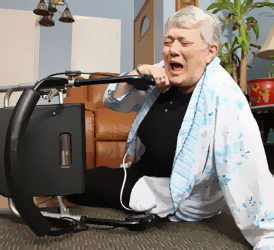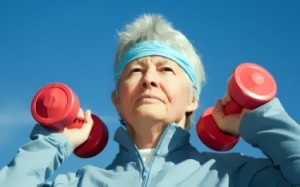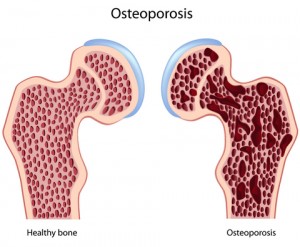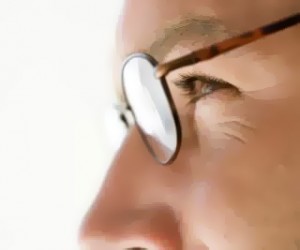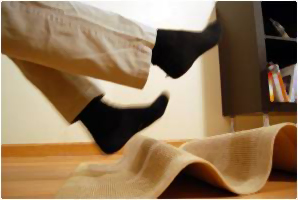Statistics:
- 66% of indivuals that have a fall, will fall again in the next six months.
- In people aged 65 to 70 only 1 out of every 200 falls will result in a broken hip.
- In people over 85 years of age 1 out of 10 falls will result in a broken hip.
- 25% of people who fracture their hip, die within six months.
- Risk increases for a fall as age increases; the likelihood is even higher for women.
- 50% of elderly patients that have a fall related injury are released to a nursing home, and never return home.
Some causes, and things you can do to prevent a fall from occurring:
- Little to no Exercise – as we age, we lose muscle. When we do not exercise, the effect is even worse. As the muscles start to atrophy and die, it becomes harder to walk correctly, and the gate changes, which causes the feet to drag very low to the ground. This increases coming into contact that may be on the ground, and a fall may occur.
Prevention: Start an exercise program, start walking, dancing, water aerobics, anything to help maintain muscles to help with stability.
- Osteoporosis – A disease that leaches the minerals from the bones which in turn causes a weakening of the bone. When a fall occurs, it is unclear as to if the bone was under stress and fractured, or if the bone was fractured as a result of the fall. In either case the cause was bone deterioration.
Prevention: Increase Calcium intakes with calcium rich foods like, milk, cheese, shellfish, yogurt, broccoli, and almonds. Supplements may need to be used as well. Additionally getting exposure to the sun for several minutes a day allow the body to produce Vitamin D, which is essential for the body to assimilate all that calcium.

Carefully read medication labels, and let your doctor know of any changes you experience in dizziness.
- Medication – Some medications cause drowsiness, reduce mental alertness, and can cause a drop in blood pressure, which can lead to dizziness, and a fall.
Prevention: Be sure to mention to your doctor any changes that may affect your ability to walk.
- Poor Eye Sight – When eyesight starts to fail, it can be more difficult to recognize changes in elevation, such as a rug, or transition from the carpet to the tile.
Prevention: Regularly schedule an appointment with an eye doctor. In doing so you will be able to see better for longer.
- Environmental obstacles – These most often include, loose rugs, furniture too close together, items left on the floor, poor lighting, or the fact that there are no rails or grab bars installed in key locations such as the restroom and bed side.
Prevention: High contrast colors anywhere there is a transition in flooring. High contrast colors between carpet and furniture. Tape down, or remove loose rugs. Install hand rails. Repair cracks in concrete or pavement. Keep walkways clear from rocks and debris. Keep sidewalks free from ice and snow.

